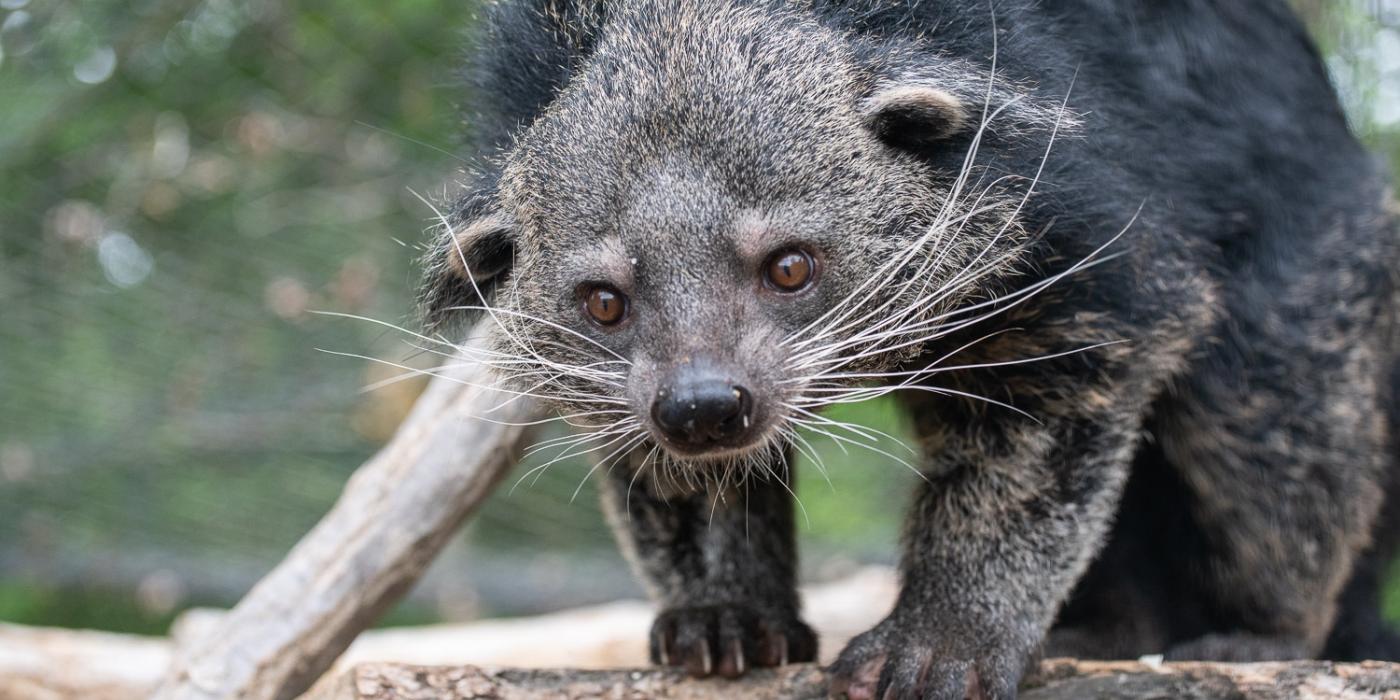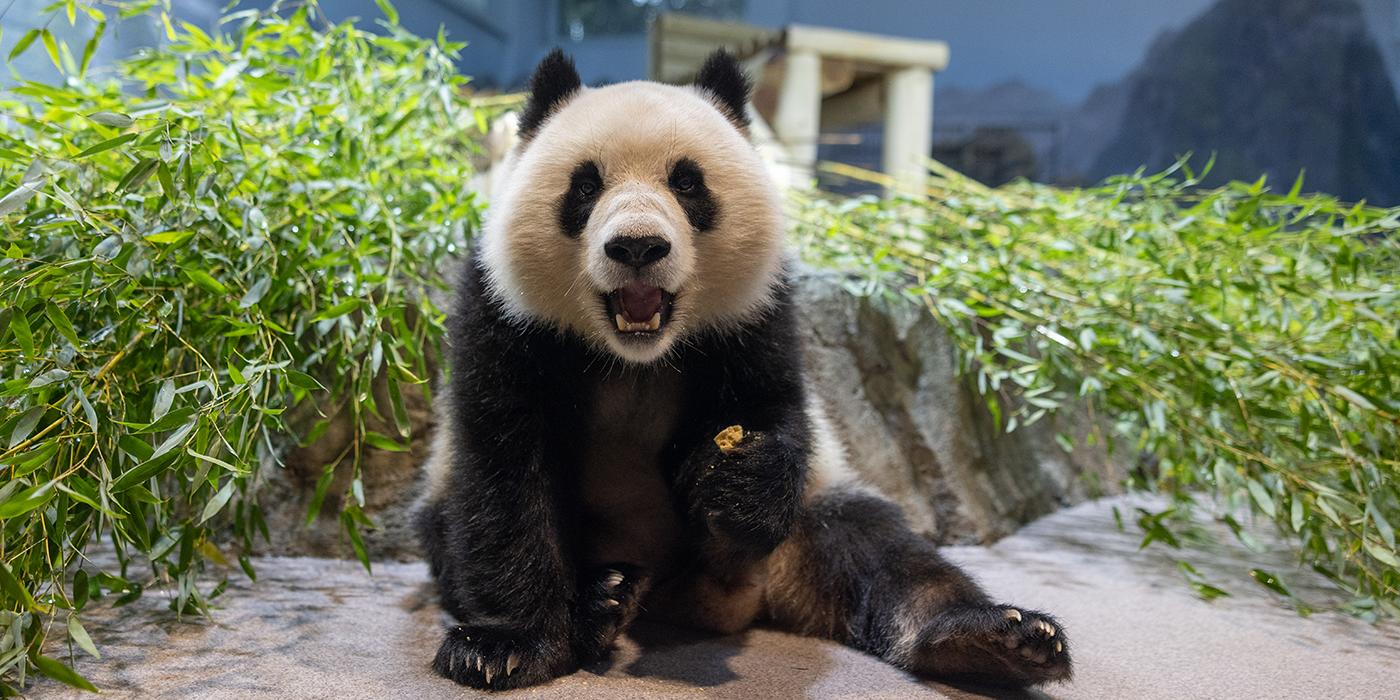New at the Zoo: Meet Hereford Calf Willow!
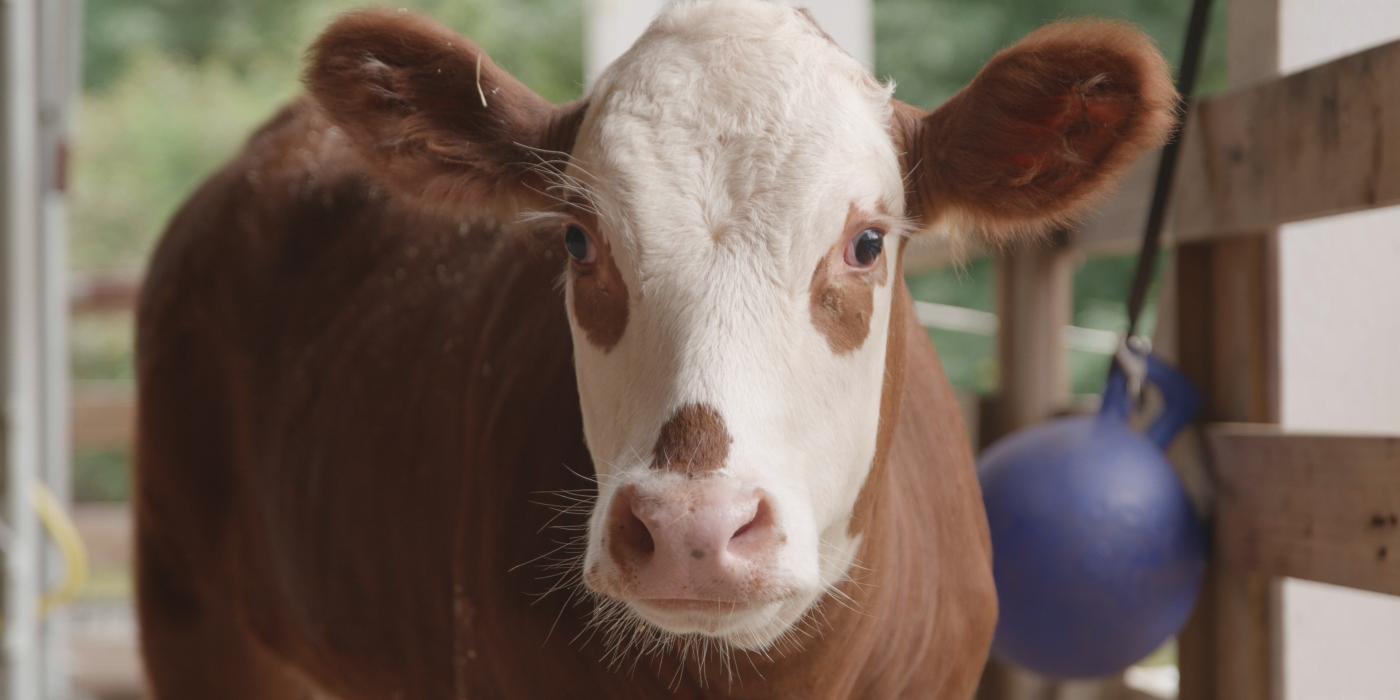
There’s a new, adorable face at Kids’ Farm—an 11-month-old Hereford calf named Willow! Over the past few weeks, she has been frolicking around the barnyard with Hereford heifer Rose and Holstein calf Magnolia (a.k.a. Maggie). Get to know the Zoo’s newest calf in this Q&A with animal keeper Nikki Maticic.
What is the difference between Hereford and Holstein cows?
Of the 60 breeds of beef cows in North America, Herefords like Willow and Rose are among the most common. As their nickname implies, beef cattle have been bred and selected primarily for the production of meat.
Compared to Holstein (dairy) cattle like Maggie, beef cattle have shorter legs and stockier bodies. Fully grown, Hereford cattle weigh up to 1,500 pounds, but Holsteins—the largest breed of cattle—can weigh up to 1,870 pounds.
What are the cows’ personalities like?
Willow is a shy yet sweet calf. As she gets more comfortable with her new surroundings, she is coming out of her shell. Willow has a curious streak and is very interested in investigating the various enrichment items we place around the yard. She frequently follows Rose and Maggie’s lead as they make their way around the yard, grazing on the grass. We are excited to see her personality develop as she settles into her new home. She will celebrate her first birthday Oct. 4.
Rose also has a very sweet personality and is quite independent. Although she is the eldest of our herd at 16 years old, she will to let out a good frolic—especially when we give her access to fresh grass! She is affectionate towards keepers when they are brushing her. Often, she will lift up her head so that we can scratch her chin and dewlap.
Maggie, who will turn 2 years old Sept. 16, tends to be the friendliest of our three cows. She is very playful and busies herself by playing with enrichment toys, running around the yard and grooming her best pal, Rose. She is quite affectionate and will often lick keepers and visitors as they pet her. But, she also has a bit of a mischievous side. She seems to get a big kick out of knocking over wheelbarrows that keepers are using to clean the yards and will sometimes kick up sand at visitors standing near the fence!
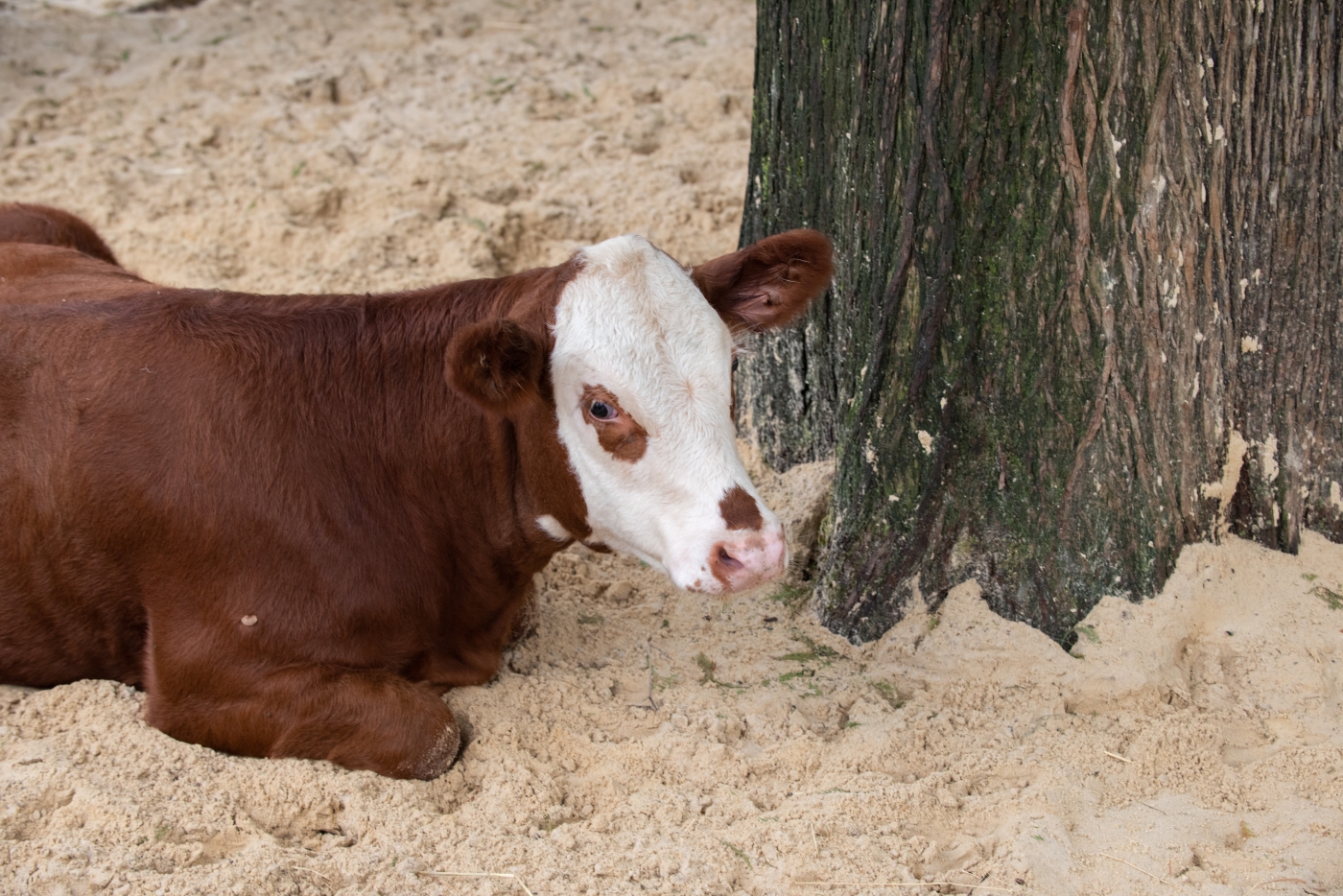
Hereford calf Willow rests in the sand at the Kids' Farm.
Do they get along?
Rose and Maggie can often be found resting together in the barnyard and grooming one another, so we hope that they will develop a similar bond with Willow. As Willow has been becoming more comfortable at the Farm, we have observed her spending lots of time grazing and eating hay with Rose and Maggie, as well as laying down all together in the sand in the afternoon.
Everyone gets along well, however, Maggie and Willow seemed to have formed the closest bond. Both will frequently be seen grazing together, interacting with enrichment and having friendly bouts of head-butting and frolicking! We are excited to watch their interactions as Willow grows.
What are their favorite foods?
So far, Willow is a big fan of sweet potato, carrots, sweet feed and browse (branches with tender shoots and leaves). We are slowly incorporating new foods into her diet to assess what her favorite fruits and vegetables are.
Rose can be somewhat of a picky eater. Hay and browse seem to be her favorites, but she also has a taste for hay cubes and sweet potato.
Maggie has an adventurous palate—she enjoys many different varieties of fruits and vegetables, her favorites being apples, bananas, oranges, carrots, beets and sweet potatoes. She will gobble up browse, hay cubes and grain, too.
Ensuring the cows have enough grass to graze on is one of the most challenging aspects of caring for them. With so many hooves moving around the yard, we section off areas in the summer to give the grass a chance to grow. When we open up that section of the yard, the cows and alpacas will spend several hours grazing on the fresh grass.
One of my favorite facts about cows is that they have four stomachs: the reticulum, the abomasum, the omasum and the rumen!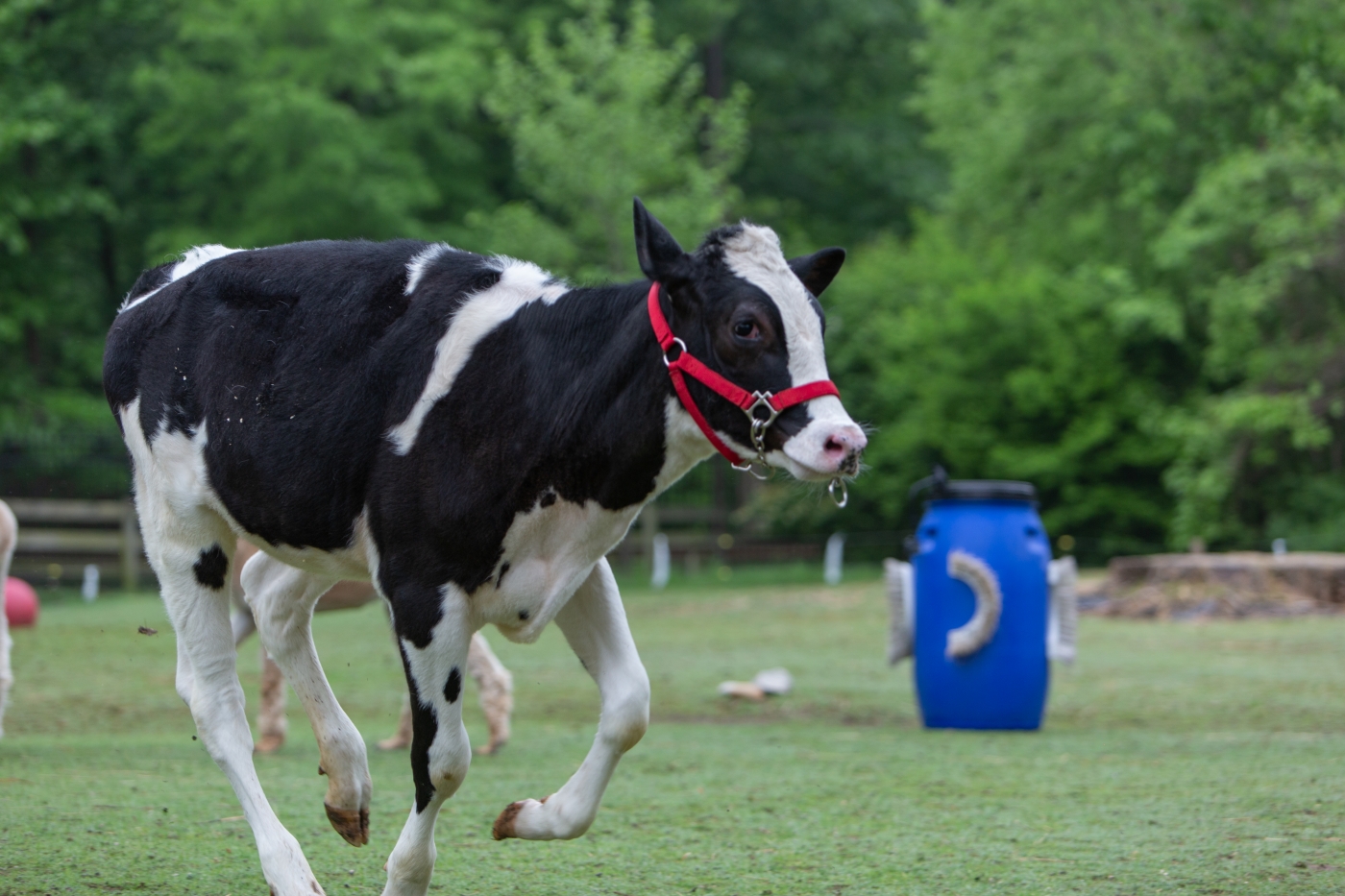
Holstein calf Maggie runs in front of an enrichment barrel, modified with upcycled brushes for grooming.
Do the cows have favorite enrichment items?
We provide the cows with a variety of enrichment items to keep them mentally and physically active throughout the day. Puzzle feeders, such as hay slow-feeders and Nose-Its, keep the cows busier for longer periods of time since the food does not come out of the device all at once. Often, we will hide biscuits that are banana- and cinnamon-flavored inside, which are special treats they only get for enrichment and training sessions. The cows have to walk around and push the device to knock the food out, which encourages them to stay physically active. Puzzle feeder also provides them with some cognitive exercise, since they have to think about the best ways to move and manipulate the feeders.
Certain toys—including boomer balls, barrels and spools—give the animals an outlet for exerting their energy. Maggie, in particular, enjoys knocking over and chasing after barrels. Sometimes, keepers will add interesting spices on the toys to make them more interesting. Oregano and cinnamon seem to get the biggest reactions out of our cows!
Another way we modify enrichment to keep it interesting is by adding brushes of various sizes to some of the sturdier objects, as well as the yard fence, which gives the cows an opportunity to groom themselves if they so choose. Certain brushes—like our extra-large upcycled street sweepers—are cow favorites.
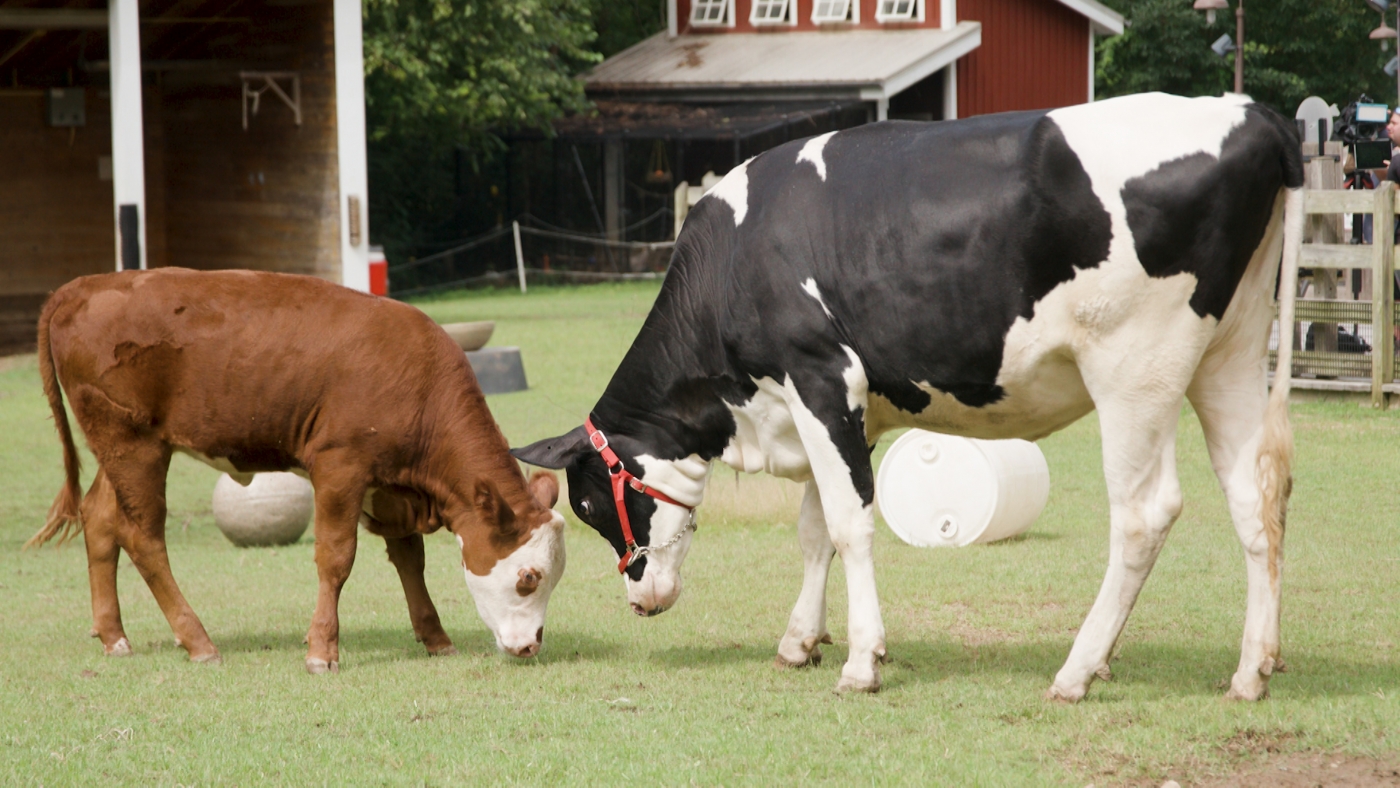
When Hereford calf Willow (L) and Holstein calf Maggie (R) met, keepers observed a lot of head-butting, frolicking, mooing, grooming and other playful behaviors between them!
What do visitors want to know about the cows?
The question we get asked most frequently is if our cows are male or female because they cannot see their udders. Rose, Maggie and Willow do have udders, though in comparison to most female cattle they are difficult to spot. That is because they have never had calves, so their udders are set a bit higher up on their bodies. Only once a female has a calf and produces milk does her udder drop and become more visible.
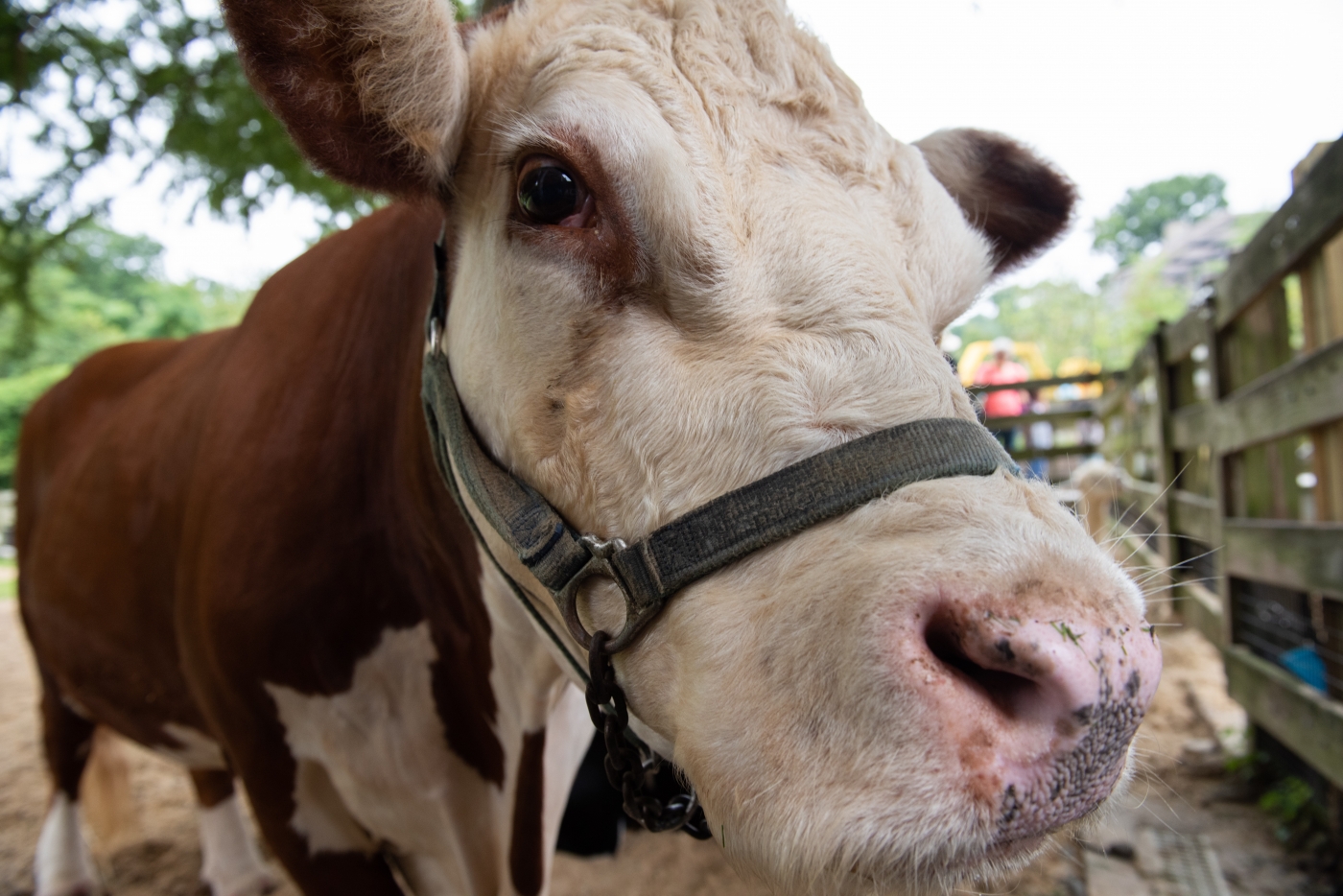
Did you know: cows have panoramic vision!
What is one thing visitors don’t know about cows that may surprise them?
Cows have panoramic vision and can see all the way around themselves! However, their depth perception is not very strong. That means that while a cow may see your shadow or outline out of the corner of her eye, she may not be able to tell how close you are to her. That is why some cows startle easy.
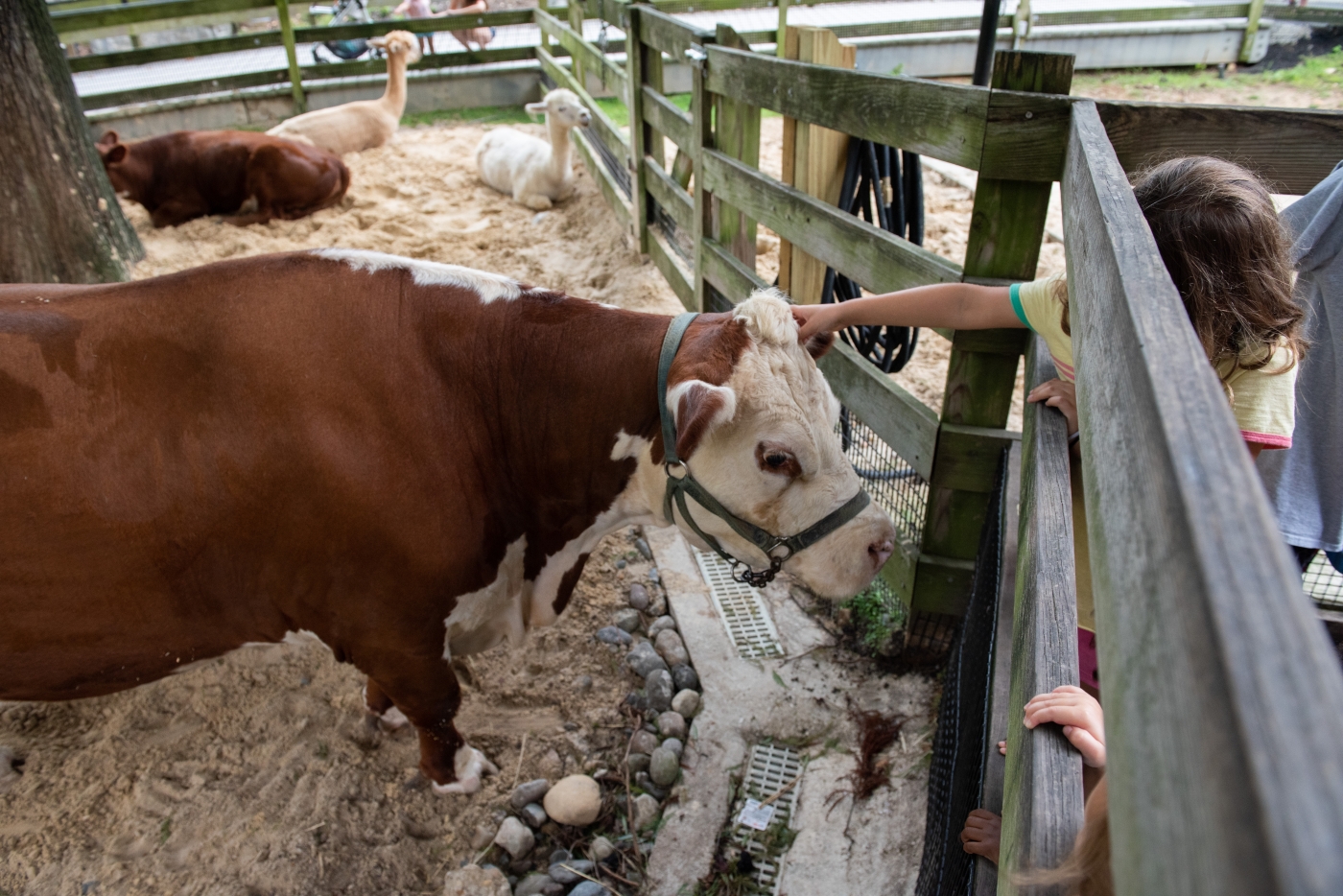
A young Zoo visitor pets Hereford heifer Rose at the Kids' Farm.
Why is meeting cows at the Kids’ Farm such a special experience?
With the Smithsonian’s National Zoo being in the heart of a major metropolitan city, many of our visitors—both adults and children—have never encountered cows before. I invite readers to come down to the farm to pet the animals, learn more about how we care for them and watch training sessions. They are such charismatic and intelligent creatures, and I hope meeting them inspires our visitors to develop an appreciation for these amazing animals!
This story appears in the September 2019 issue of National Zoo News. Meet the Kids’ Farm animals during keeper talks at 10:30 a.m., 11 a.m. and 1:30 p.m. daily. Check out the full list of animal encounters here.
Related Species:


